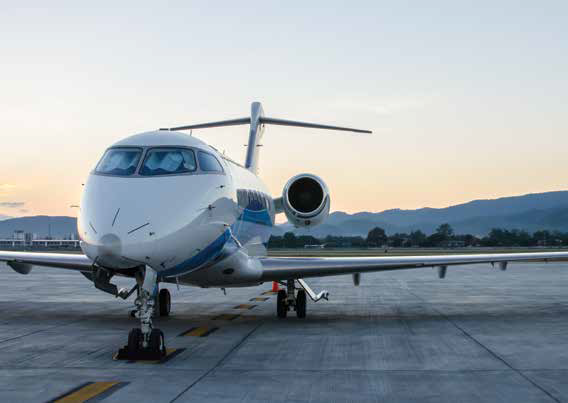
On Oct. 30, 1935, at Wright Field in Dayton, Ohio, a sleek new airplane was rolled out onto the tarmac for its second evaluation flight. The plane, which was a Boeing Model 299, was participating in a competition against entries from Martin and Douglas for a contract to build 200 bombers for the US Army Air Corps.
The four-engine aluminum-skinned aircraft was piloted by Maj. Ployer P. Hill and his copilot, Lt. Donald Putt. Also aboard was Boeing’s chief test pilot, Leslie Tower, Boeing mechanic C.W. Benton, and Henry Igo, a representative of engine manufacturer Pratt & Whitney. On the ground was a small crowd of military officers and Boeing executives.
Expectations for this test flight and the Model 299 were very high. It was one of the most advanced aircrafts ever built, and it had significantly outperformed the competition in previous evaluation flights. After being cleared for takeoff, the Model 299 roared down the runway, left the ground, and made a smooth climb to 300 feet. Suddenly, the aircraft stalled, turned on one wing, crashed, and erupted in flames.
Putt, Benton, and Igo, although badly burned, managed to escape the wreckage and survived. Hill and Tower were pulled from the plane but died later of their injuries. An investigation found that pilot error had caused the crash: Hill, who was unfamiliar with the Model 299, had neglected to release the lock on the elevator and rudder controls before takeoff, rendering the plane inoperable in flight.
In the extended post-mortem that followed the crash, there was much discussion about whether the Model 299 was too much for the pilots to handle. Until that time, flying an aircraft had taken some skill but was viewed more or less like starting a car and taking a drive on the highway. The crash at Wright field showed that this seat-of-the-pants flying style was inadequate for a more advanced aircraft. Boeing’s new plane required the pilot to manage the complexity of attending to four engines, retractable landing gear, new wing flaps, and electric trim tabs that needed adjustment to maintain control at different airspeeds and constant-speed propellers whose pitch had to be regulated with hydraulic controls, among other features.
Boeing lost the Army contract. But the Army Air Corps was so impressed with the performance of the Model 299 that it purchased 12 for further evaluation. The pilots who were called upon to fly these planes realized they had to develop a practical strategy to effectively manage the complexity of such an advanced aircraft. They needed to make sure that every required task was done and that nothing was overlooked. This challenge resulted in the development of an innovation that proved to be a significant milestone in aviation safety: pilots’ checklists.
The checklists included detailed procedures for all phases of aircraft operation — pre-flight, takeoff, flight, landing, and post-landing. As they used the lists, pilots discovered that the Model 299 was not too difficult for one person to fly. It was simply too complex for any one person’s memory.
With rigorous training and use of the new checklists, the 12 Model 299s were flown 1.8 million miles without a serious accident. Eventually, the Army ordered 12,731 planes of this model, later dubbed the B-17 Flying Fortress, which became the most significant air weapon of its time.
Business professionals can benefit from the lessons learned during this important aviation innovation. Like modern aircraft, businesses have a level of complexity that exceed any one person’s ability to manage without well-designed procedures to check the status and performance of critical systems. This is especially true for multinational corporations that must find a way, every day, to navigate a hazardous and byzantine legal landscape. Although advances have been made, much work remains to match modern aviation’s safety performance. Every year, many companies continue to crash and burn because they fail to complete the checks necessary to ensure a safe “flight.”
In their attempt to avoid this fate, virtually every company invests in corporate functions and compliance management systems to prevent and detect violations of law. But, as history has shown, these investments alone are inadequate to avoid catastrophe. To fly more safely, you must also develop and teach your corporate pilots to use a compliance and ethics checklist designed to gather and convey accurate information regarding the effectiveness of compliance controls your firm is counting on to stay aloft.
At a minimum, such a checklist should be designed to help your company leadership monitor:
- Changes in the legal landscape;
- Financial controls to ensure they produce accurate financial statements and prevent fraud;
- The performance of its quality controls to minimize waste and product defects;
- Compliance with labor laws and data privacy requirements;
- The performance of safety, health, and environmental controls to minimize the risks of employee injury and environmental harm; and,
- Employee training effectiveness to ensure understanding of legal requirements.
But, as aviators know well, checklists alone do not guarantee a safe flight. You need pilots who know how to use them and have the discipline and commitment to do so. This is a learned skill. Business leaders who might be well-versed in reading spreadsheets must also be taught how to interpret and respond to data generated by compliance checklists to ensure corrective actions are taken before the company hits the ground. And, like overconfident fighter jocks, your hot shot business professionals must be brought to heal. You must create a culture where your pilots are not rewarded for getting to their destination quickly unless they do so in the right way — one that does not put the enterprise at significant risk.
Advancing your company from a seat-of-the-pants approach to business management to a more systems-oriented one can be difficult, but it has many benefits. It reduces cognitive overload by minimizing risks and maximizing opportunities for collective learning and continuous improvement. Just as in the early days of aviation, developing the systems necessary to achieve these ends is a significant challenge. But it may be the best way to ensure that you and your team take off and land at your intended destination without incident over the long term.




